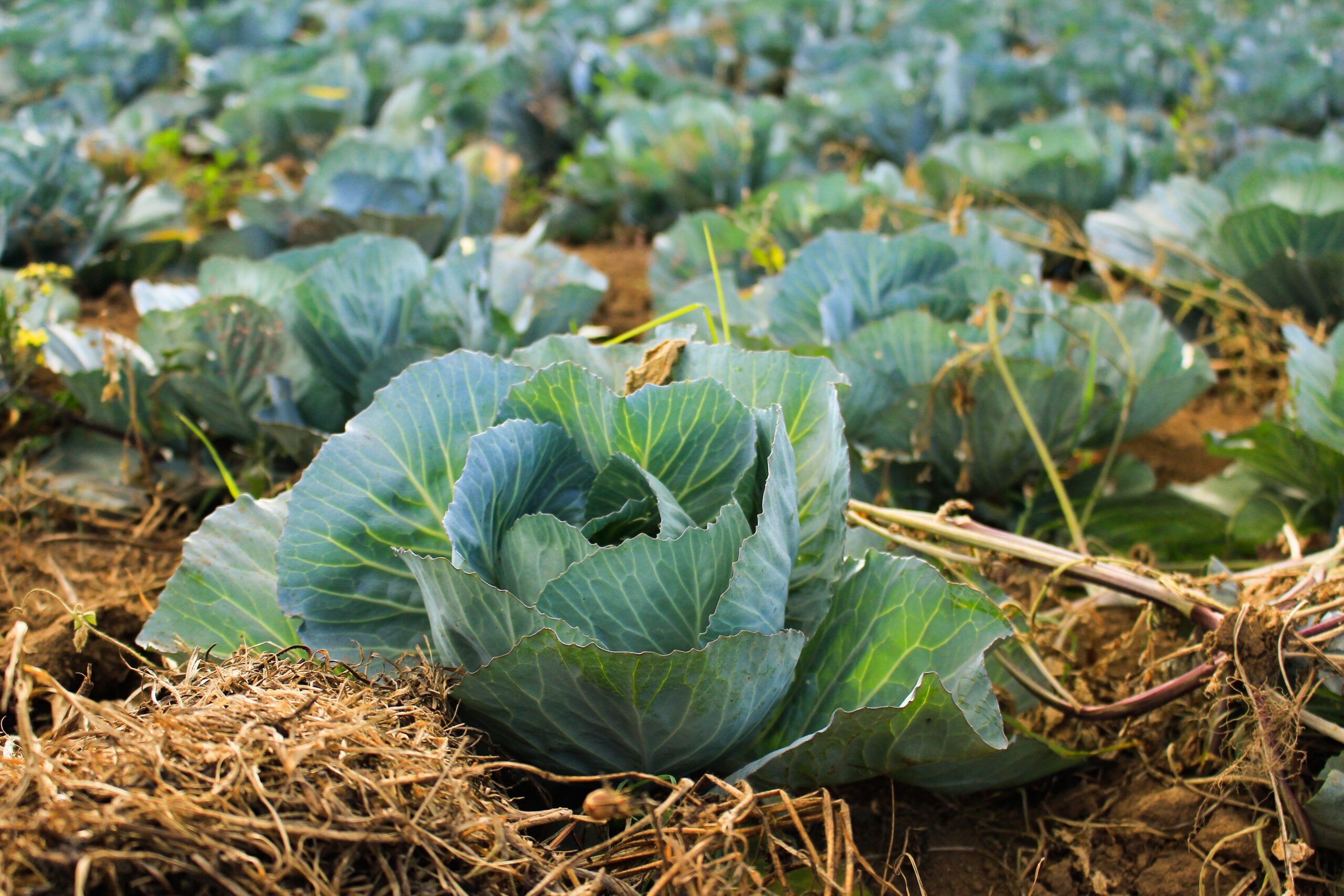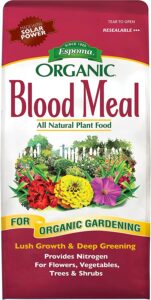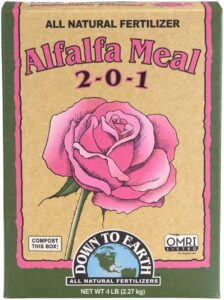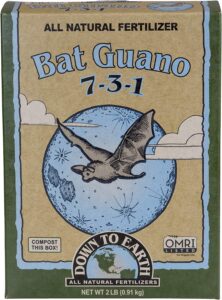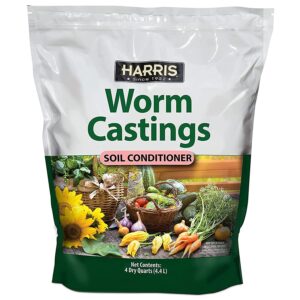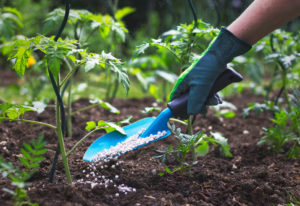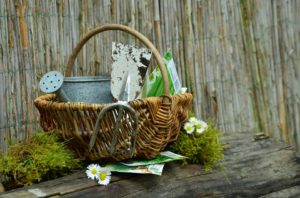If plants in your garden have exhibited one or more signs of nitrogen deficiency, don’t worry, there are several measures you can take to remedy the situation. Before you begin, however, it would be wise to conduct a quick soil test to determine if you indeed have a deficiency. Testing the soil is important because other conditions can mimic a nitrogen deficiency, and if you add nitrogen when it is not needed, you run the risk of creating nitrogen toxicity. This is the quick and inexpensive soil test kit I use.
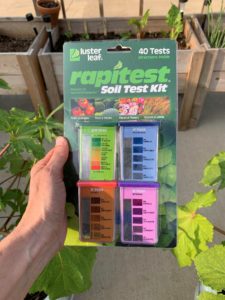
This article contains affiliate links. If you make a purchase using one of these links, I will receive a very small commission at no additional cost to you, and it will help me maintain this website. Rest assured, I only recommend products I actually like!
Here are the top eleven ways to correct and or prevent a deficit. Note that some solutions work faster than others, and depending on the severity of the problem, you may need to choose a method that is faster acting.
How to Remedy a Nitrogen Deficiency
Fish Emulsion
Fish emulsion is made from either whole fish or fish byproducts such as fish scraps, fish oil, or fish meal. It has an NPK (nitrogen-phosphorus-potassium) ratio of 5:1:1, meaning that it is higher in nitrogen than it is the other two macronutrients. In addition, fish emulsion, also called fish fertilizer, also contains micronutrients like calcium, chlorine, sulfur, and magnesium.
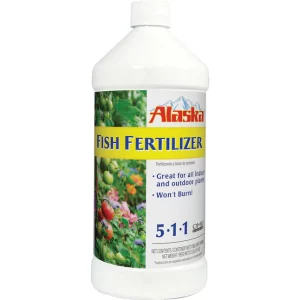
Fish emulsion is sold as a concentrate and requires mixing with water before applying it to the soil or using it as a foliar spray. Because fish emulsion is in liquid form, it acts quickly and is readily absorbed by the plant. The plants should recover in about one week. Leaves that have already been significantly affected by the deficiency, however, may not recover. This is the fish emulsion that I use.
Blood Meal
Blood meal, like fish emulsion, is an animal byproduct that can be used to treat nitrogen deficiency in the garden. It is made from animal blood that has been collected from a butchery and dried. Unlike fish emulsion which is fast-acting, blood meal is a slow-acting treatment method that can take several weeks to break down into the soil and become available to plants. Therefore, it is best to use blood meal as a preventative measure, especially if planting high-nitrogen demanding plants like broccoli, Brussels sprouts, cabbage, cauliflower, kale, spinach, etc. This is the blood meal that I use.
As a bonus, blood meal can be used to deter pests that do not like the smell. For example, blood meal lightly sprinkled on plants can repel deer, moles, and rabbits. On the other hand, the smell may attract omnivores and carnivores, like dogs, cats, and racoons to your garden. You can minimize or eliminate this by working the blood meal into the soil. I often use it when I refresh my container soil for the season.
Alfalfa Meal
Alfalfa meal is another fast-acting nitrogen fixer, especially if steeped in water for three days to make a “tea.” It is a suitable alternative for those not comfortable with using animal products like fish emulsion and bloodmeal, although it has a lower level of nitrogen. If used in pellet form, know that it may attract rodents. Here is a reputable brand of organic alfalfa meal online.
Fertilizer
Another option for improving nitrogen levels in the soil is to use either organic or synthetic fertilizers. The first number listed in the NPK (nitrogen, phosphorus, potassium) ratio is nitrogen, so select a fertilizer where the first number listed is higher than the other two numbers. Liquid fertilizers will work faster than granular ones.
A word of caution, however, some vegetable plants, like carrots, turnips, sweet potatoes, and beets, need more phosphorus than nitrogen. Too much nitrogen can cause an abundance of leafy growth but stunt flower, fruit, and vegetable production.
Animal Manure and Manure Tea
Animal manure from chickens, cows, horses, goats, and sheep is another reliable source of nitrogen for your garden. These types of animal manure are considered hot because they release nutrients quickly, potentially burning the plants. Hot manure must first be aged or composted before applying.
Rabbit manure, on the other hand, is a cold manure that releases nutrients more slowly. As such, it does not need to be aged or composted but is ready for application. (Some caution that if it has been sitting in rabbit urine for an extended period, the urine could make it hot.) Rabbit manure is a favorite of small farms and home gardens alike.
Bat manure, also called guano, is another cold manure. Of the animal manures listed above, it has the highest percentage nitrogen, but it also has a fair amount of phosphorus. You can purchase organic guano online here.
Any of the manure types listed in this article can also be used to make manure tea, which is a faster acting method of adding nitrogen to the garden.
Compost and Compost Tea
Compost is made from organic material such as leaves, grass clippings, food scraps, coffee grounds, and dead or unwanted plant material. As a soil amendment, compost improves the condition of the soil and adds important beneficial microbes that convert the organic matter into macro and micronutrients the plants can use. It is a highly effective way to boost nitrogen and other nutrient levels in the soil. The process, however, takes time as the nutrients are slowly released into the soil. Adding compost to the garden is a safe way to help prevent nutrient deficiencies.
As with aged animal manure, you can steep aged compost in water to make compost tea that will be faster acting.
Worm Castings and Worm Tea
Worm castings are comprised of soil and organic matter that has passed through a worm’s body and cast or eliminated on the surface. The process, also known as vermicomposting, produces beneficial microbes and nutrients for the soil. Castings contain smaller amounts of nitrogen as compared to other sources mentioned in this article.
You can establish a vermicomposting system for your garden, or you can purchase worm castings online. You can also make a worm castings tea to speed up the delivery of the nutrients.
Cover Crops, a.k.a., Green Manure
Cover crops are crops that are grown with the intention of adding nitrogen back into the soil. There are four types of cover crops: legumes, such as clover and alfalfa, grasses, such as ryegrass and barley, broadleaves, such as spinach, and brassicas such as mustard and radishes. They are also referred to as green manure because, once grown, they are cut and returned to the soil where they will provide fresh organic matter and nutrients.
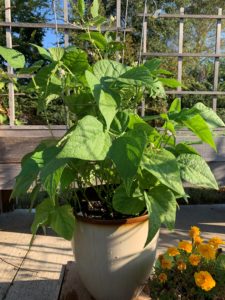
Beans and peas are among the most popular legume nitrogen-fixing plants. They join forces with microbes in the soil, which draw nitrogen from the air and convert it into a form the plants can use. But to maximize the amount of nitrogen released back into the soil, the crops should be cut down and left in place before they flower. Otherwise, the plant will use the nitrogen to produce seeds. While growing cover crops is a viable way to add nitrogen back into the soil, it takes a growing season to accomplish and uses garden space that could otherwise be used for a crop that can be harvested for food.
Coffee Grounds
Spent coffee grounds can be used to add nitrogen back into the soil. If you are a coffee-drinker, you can save the grounds from your morning coffee routine. If you do not like coffee or if you need more grounds than you can make yourself, check with a local coffee shop as many are glad to give you theirs for free if you ask them.
Sprinkle the used grounds over the soil and then work them into the top layer. Alternatively, you can add them to the compost pile. Either way, this method will take time because the coffee grounds need to break down to be effective.
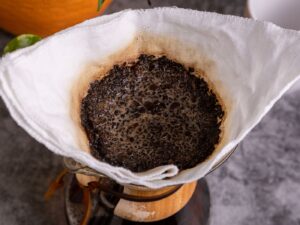
Chop and Drop
Chop-and-drop is the garden colloquialism used for cutting down plants and leaving them in the location where they were grown to decompose. You literally chop them down and drop them in place. The plants will add nutrients, including nitrogen, back into the soil as they decay. This method is easier than composting, but it too will take time. Be sure not to chop and drop or compost diseased plants.
Grass Clippings
Summer is a great time to spread grass clippings you collected while mowing the lawn. Simply sprinkle them as a thin layer of mulch around your plants. As the grass decomposes, it releases nitrogen back into the soil. It is important to make sure there are no weeds among the clippings, so no weed seeds sprout in the garden, and that the grass is free of chemicals like pesticides.
Thank you for reading this article! If you found it helpful, please consider sharing it with others via email and social media!
